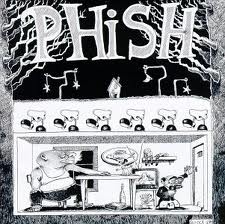 SOUNDTRACK: AWAY-Cities (2013).
SOUNDTRACK: AWAY-Cities (2013).
 Away is Michel Langevin, the drummer for metal band Voivod. But on his first solo album he eschews all conventional music. Rather, he has created an exercise in found sound and released it on the small label Utech Records.
Away is Michel Langevin, the drummer for metal band Voivod. But on his first solo album he eschews all conventional music. Rather, he has created an exercise in found sound and released it on the small label Utech Records.
The album is described as
Strong field recordings capture more than just the sound of an area, they capture a mood and spirit of the place and people. On Cities, local color and nature recordings clash with riots and discord, capturing the full human experience across the world. Literal and metaphorical “found music” appears: the booming stereo of a passing car or distant church bells, as does the rhythmic engine hum of a bus or the chirping of birds. This tour is a fast paced one, rapidly weaving through the geographic locations building a diverse, yet consistently engaging experience. The audio journey captured here perfectly reinforces the fact that, regardless of one’s location, the presence of music is never far, nor should it be.
What we get is a collection that sounds like a tour through the streets of the respective cities (nothing more specific than Europe is given, sadly). We hear street noise and buskers playing (interestingly just about every type of music I have heard in Boston subways as well).
I only wish more information was given about just what Away was up to. Where he was and, more importantly, how he recorded these sounds. The recording quality is amazing—the panpipes and harmonicas sound crisp and clean with no other ambient noise. Did he ask the performers if he could record? How did he get them so pristine especially since I assume they are in the streets? And for the Europe ones, was there any given order to the way they were edited? Is it the progression of their Voivod tour, or is it just random? The mixing and sequencing is quite good, especially in the shorter pieces which really take you on a journey. Not knowing what’s happening is maddening and part of the fun as you try to picture (especially if you use headphones) exactly what you are hearing.
“Montreal 2010” opens with the sound of travel until we zoom in on panpipes (for a few seconds). This switches to a lurching shanty (sung, I suspect in French—it’s a little hard to hear). Then from the shadows comes the sound of someone playing Leonard Cohen’s “Hallelujah” on the harmonica.
“Europe 2012” opens with someone playing what I suspect is a hammered dulcimer (exactly the kind of thing that buskers play in subway stations), it shifts to a jazz trio (sax, bass, drums) wailing away with traffic noises in the background. After some busses and an accordion solo, there are delicate chimes. Finally a bagpipe melody leads us away from the delicate chimes until we hear announcements in what sound like Russian and then French. The track ends with fans chanting “Voivod Voivod.”
Montreal 2012 returns Away to near his home city. This time the scene is much nosier—it could be joyous, it could be angry—there are whistles and horns, and by the end it seems like a joyous parade. The noise diminishes as an operatic voice pierces through briefly until the drums return. More street noises, including police sirens, French chanting and a train passing by as we return to yet more street drumming. If this track had more context for the title it would probably be more enjoyable. And yet as the parade (for surely that is what it is ) marches past you feel like you’re there.
“Mexico City 2012” opens with a truck honking and street noise until we hear what sounds like an indigenous band playing, then some more flute music and church bells pealing. Then there are announcements in Spanish (by both a man and woman presumably in the church) and church organ music. Pan pipes and drums bring us back into the street and what sounds like a market scene which ends with some Mexican music playing.
“Europe 2011” opens with some beautiful guitar or perhaps an Indian stringed instrument playing and some traditional Indian singing. There’s some more music playing and cheering and then some peace as birds take us out of this short track.
“Montreal 2011” opens with banjo music (!). And then the more typically French sounding violin moves us along. More pan pipes and traffic noise progress us through the city. Then two very different examples of accordion music meld until the noise of the train wipes them out. The track fades out with a band playing a jaunty accordion inspired track.
“Chicago 2012” ends the disc with a symphony orchestra tuning up (I presume) for a few minutes. It’s a shocking cacophony. Until someone shushes the noises and the birds return, playing us out of this aural tour.
You can stream, download or buy the CD here. Buying the CD gets you some of Away’s cool art (although I wish there was more).
[READ: October 8, 2013] “War Wounds”
Since I’ve been enjoying Tom Bissell’s book reviews, I thought I’d see what else he had written in Harper’s. He seems to have a storied career with the magazine as a traveling journalist. And this article dates back to 2004.
It is a personal article about himself and his father. What I found fascinating about this is that his father was a Vietnam veteran, and I don’t know too much in the way of writing that concerns being the child of a Vietnam veteran. There are a lot of books and films about the Vietnam experience for the soldiers, but not so much about the families that they returned to (as far as I know). So it was interesting to read Bissell’s account of growing up with his father–who was a hard man and who wasn’t afraid to fight with his children (especially when drunk).
The man that Tom grew up with had a temper and didn’t much approve of Tom’s chosen profession. But unlike many people of his generation, Tom didn’t feel that he had a particularly estranged relationship with his father. What on earth possessed him to invite his father on a trip to Vietnam–to visit the sites where he lost friends and was himself wounded, is the stuff of journalism. (more…)
Read Full Post »
 SOUNDTRACK: TOULOUSE LAUTREC-“Yesman” (2013).
SOUNDTRACK: TOULOUSE LAUTREC-“Yesman” (2013). Toulouse Lautrec are an alternative rock band from Romania. Once again, I would not have ever heard of them had I not looked fora song about Lautrec (since he is mentioned in this section of the reading).
Toulouse Lautrec are an alternative rock band from Romania. Once again, I would not have ever heard of them had I not looked fora song about Lautrec (since he is mentioned in this section of the reading).














